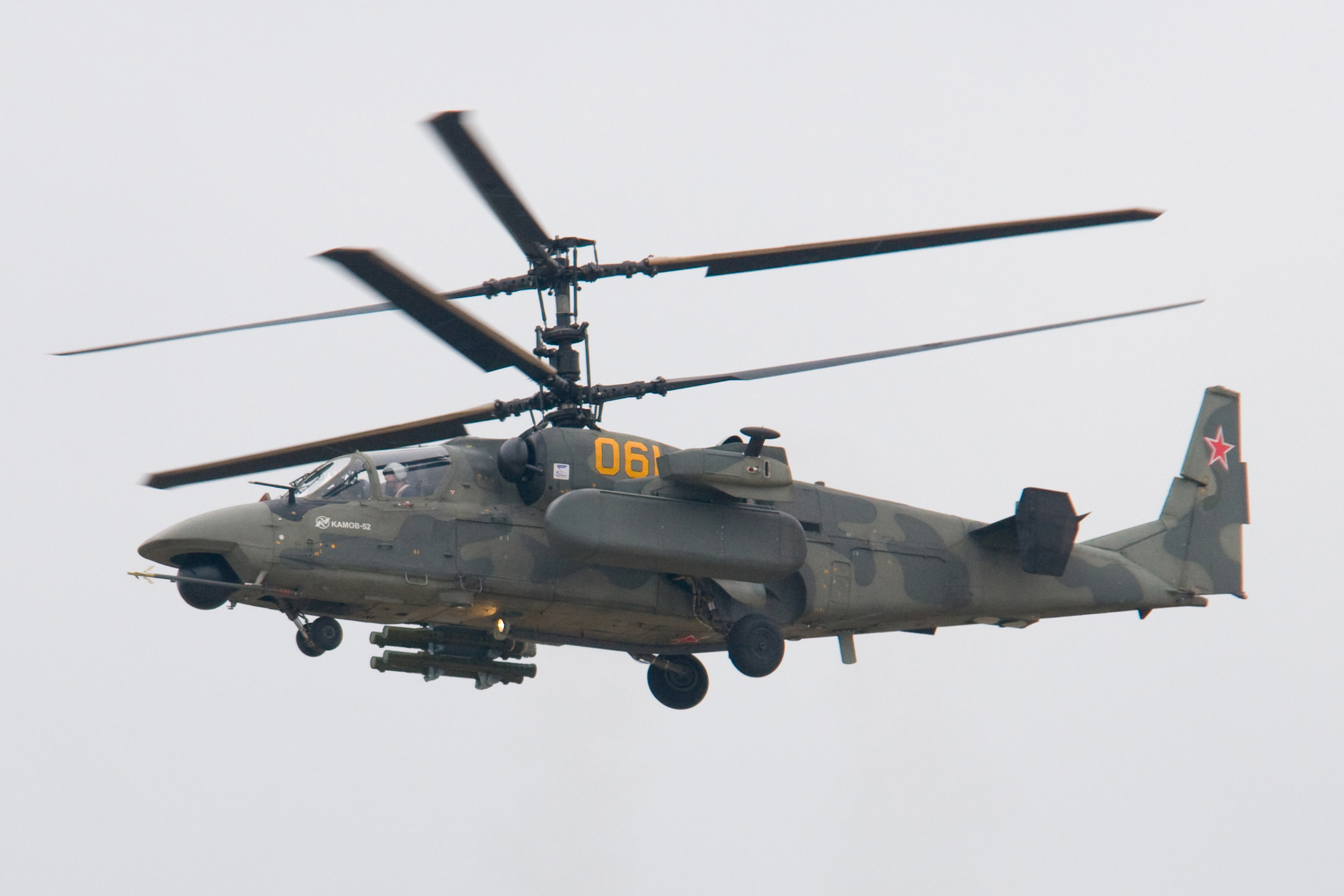Social media was recently swamped with images and videos showing Russia’s full-blown attack on Ukraine. Experts believe that China would be closely watching the performance of Russian hardware as Beijing sources many weapons from Moscow.
As per videos going viral on social media, it appears the Ukrainian military shot down two Ka-52s on the very first day of the Russian invasion. Called ‘Alligator’, Ka-52 is touted as Russia’s most sophisticated attack helicopter.
The choppers are frequently compared with the US Army’s AH-64 Apache. Last year, several publications including The EurAsian Times and South China Morning Post reported that China was considering buying the Russian attack chopper.
In the past few years, Moscow has showcased this as one of the most lethal combat choppers. It was displayed at the Dubai Air Show last year in the hopes of boosting its export potential.
China’s People’s Liberation Army Navy (PLAN) is planning to acquire up to two squadrons (36 units) of the Russian-made co-axial (or contra-rotor) Kamov Ka-52K ‘Katran’ — a naval variant attack helicopter, to operate from its Type 075 Landing Helicopter Dock (LHD), according to The EurAsian Times.

The development in Ukraine could put Beijing in a bind as it had already ditched its homegrown Harbin Z-10 attack helicopter in favor of the Russian platform. Furthermore, there have been numerous accounts of this chopper being taken down by man-portable air defense systems.
China’s Interest In Ka-52
Beijing considers Taiwan a breakaway province and wants to reunite it with the mainland, if necessary by force. China has ramped up what is perceived as intimidatory measures by deploying warplanes into Taiwan’s Air Defense Identification Zone.
The lack of a heavy assault helicopter to operate from ships for amphibious operations and ground attack is the rationale behind China’s acquisition of the Ka-52K. In addition, China’s domestic aerospace industry’s failure to produce one is another factor driving its choice.
The Ka-52K is a naval version of the Ka-52 Alligator, capable of carrying powerful anti-ship missiles with ranges over 100 kilometers, air-to-ground missiles, ground-attack rocket pods, a 30mm cannon, and radars with ranges exceeding 200 kilometers.
This effectively transforms it into a ‘multirole’ helicopter capable of providing close air support as a heavy helicopter gunship as well as reconnaissance and scouting missions, giving targeting data and battlefield monitoring.
It has folding rotor blades, folding wings, and life-support systems for the crew. For usage in marine conditions, the fuselage and systems have been given a specific anti-corrosion treatment.
Despite the fact that China’s Harbin Z-10 attack helicopter is a powerful platform, it is still classified as a light/medium weight attack helicopter due to its engine capacity. Even the most recent variants are still powered by WZ-9 turboshaft engines, as the WZ-16 engines are still in development and will not be available in serial production.
One of the reasons Pakistan selected the Turkish T-129 ATAK assault helicopter over the Z-10 was engine performance concerns. The Klimov VK-2500, which drives the Ka-52K, produces nearly twice as much power as the WZ-9 turboshaft engine, which produces 1,300 horsepower.
https://twitter.com/evazhengll/status/1497182186759462932?s=20&t=hwkGaMpD6Rr-VvwxjDowsg
Besides, it cannot carry its designated maximum payload of 16 HJ-10 anti-tank missiles. Likewise, even the armor panels are made of lightweight graphene, since the engines can’t lift the added weight.
The Russian Ka-52K is substantially heavier, weighing 12 tones compared to the Z-10’s 7 tones. However, the latter is not a heavily armored helicopter that can neither inflict nor sustain major damage.
In the case of a land assault, Chinese war games and drills have long imagined shattering medium and heavy armored ground targets (which could be none other than Taiwan). Although the PLA Navy and Air Force can take down Taiwanese air and naval assets, when a land invasion begins, smaller sea and land targets will need to be attacked by heavy attack helicopters.
The Ka- 52 can survive 12.7 mm armor-piercing rounds and 23 mm projectile fragments, with even the rotors reportedly able to endure small weapons fire. That is why China has anticipated that Taiwanese anti-aircraft units will have a difficult time combating these rotorcraft, which could be employed simultaneously with other air and ground assets, given China’s tendency to overpower and confuse opposing forces.
- Contact the author at ashishmichel@gmail.com
- Follow EurAsian Times on Google News